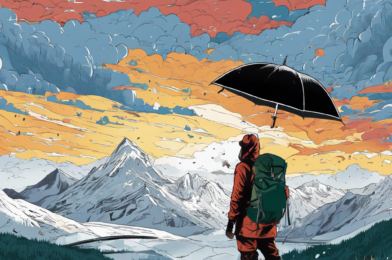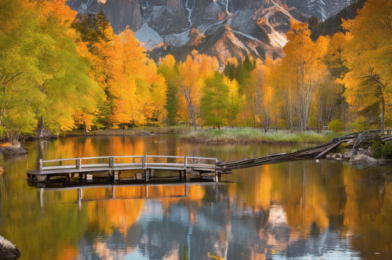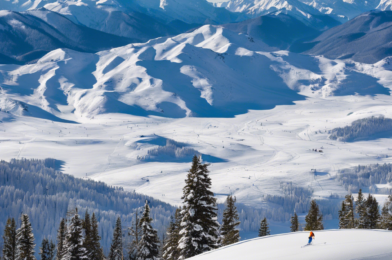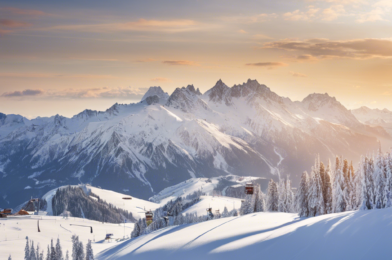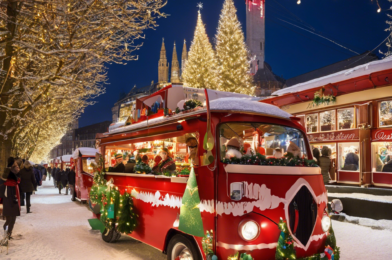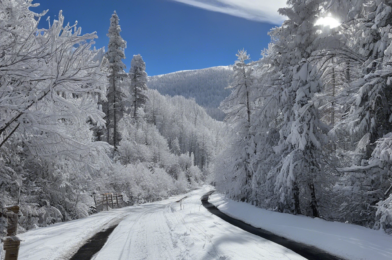It’s no secret that ski resorts can be expensive. With the cost of lift tickets, equipment rentals, and lodging, a day on the slopes can quickly add up. However, there are a few hidden gems out there that offer surprisingly low prices, providing an affordable winter getaway for skiers and snowboarders alike.
One such place is the small town of Sainte-Anne-des-Ladders in Quebec, Canada. Nestled in the heart of the Laurentian Mountains, this charming village offers a plethora of affordable ski options. Local resorts offer discounted lift tickets for students and seniors, and inexpensive equipment rental packages, making it a cost-effective choice for families and budget-conscious travelers. The area also boasts a variety of reasonably priced accommodations, from cozy bed-and-breakfasts to affordable Airbnb options, allowing visitors to extend their stay without breaking the bank.
Another budget-friendly ski destination can be found in the Bulgarian town of Bansko. Located at the foot of the Pirin Mountains, Bansko offers a modern ski resort with a surprisingly affordable price tag. Lift tickets are significantly cheaper than at many European resorts, and the town itself offers a range of low-cost accommodations and restaurants. With its combination of well-groomed pistes and affordable prices, Bansko has become an increasingly popular choice for skiers and snowboarders looking for a cost-effective winter vacation.
For those seeking a more remote and adventurous experience, Kasachstan’s Tian Shan Mountains offer a unique and budget-friendly option. Here, heli-skiing — a thrilling experience where a helicopter drops riders off at the top of untouched slopes — is surprisingly affordable compared to other destinations. With prices that compete with those at well-known ski resorts, this Central Asian nation offers a once-in-a-lifetime experience that won’t break the bank.
In addition to these destinations, there are a number of ways that skiers and snowboarders can save money on their winter vacations. One strategy is to look for “ski-and-stay” packages, which bundle lodging and lift tickets together for a discounted price. Another cost-saving measure is to bring your own food to the slopes instead of purchasing meals at the resort, which can often be overpriced.
So, for those who thought that a ski vacation was beyond their budget, think again! With a bit of research and flexibility, there are a number of destinations and strategies that can make a winter getaway more affordable than you might imagine. From affordable resorts in Quebec and Bulgaria to heli-skiing in Kazakhstan, there are plenty of opportunities to hit the slopes without going broke. So start planning your winter escape, and soon you’ll be carving turns and making memories without sacrificing your financial well-being.
Of course, one of the best ways to save money on a ski trip is to choose a destination that offers a range of outdoor activities in addition to skiing and snowboarding. That way, you can still enjoy the beauty and excitement of a winter wonderland, even if you don’t want to spend every day on the slopes. For example, places like Lake Tahoe, California, or Whistler, British Columbia, offer snowshoeing, snowmobiling, and scenic winter hiking trails in addition to world-class skiing.
Another tip for keeping costs down is to be flexible with your travel dates. Ski resorts typically charge a premium during peak times, such as school holidays and long weekends. So, if you can plan your trip during the week or at less busy times of the year, you’ll often find better deals and shorter lift lines! It’s a win-win situation. You could also consider taking advantage of “early bird” specials by booking your trip well in advance, or conversely, looking for last-minute deals if you’re able to be spontaneous.
While it’s true that ski equipment can be expensive, there’s no need to buy everything brand new. Many resorts and local sports stores offer rental equipment, and you can often find great deals on gently used gear at second-hand sports stores or online marketplaces. This is a great way to save money, especially if you’re not sure how often you’ll be using the gear. Renting or buying used also gives you the flexibility to try out different brands and models to find what works best for you.
Traveling with a group is another smart way to keep costs down. Sharing accommodation and transportation expenses with friends or family can result in significant savings. And, of course, sharing these experiences with your favorite people only adds to the fun! Carpooling to the resort and cooking meals together at your accommodation are other ways to save money and enjoy quality time with your travel companions.
Finally, don’t forget to inquire about discounts and special offers. Many resorts offer deals for large groups, so be sure to ask about any potential savings. Students, seniors, and members of certain clubs or associations may also be eligible for reduced rates, so it’s always worth asking about available discounts when booking your trip. With a bit of research and some strategic planning, you can make your dream ski trip a reality without breaking your budget.
So, what are you waiting for? Start planning your affordable ski adventure today! With these cost-saving tips and a bit of flexibility, you’ll be enjoying the thrill of speeding down slopes and the beauty of snowy mountain landscapes in no time, all without emptying your wallet. Remember to explore lesser-known resorts, be flexible with your travel dates, take advantage of package deals, and embrace activities beyond just skiing and snowboarding. Happy trails and even happier savings!
As always, be sure to follow The Washington Post and BuzzFeed News for more engaging and informative articles on a wide range of topics, bringing you the latest and greatest from the world of journalism. Happy reading, and stay tuned for more!

